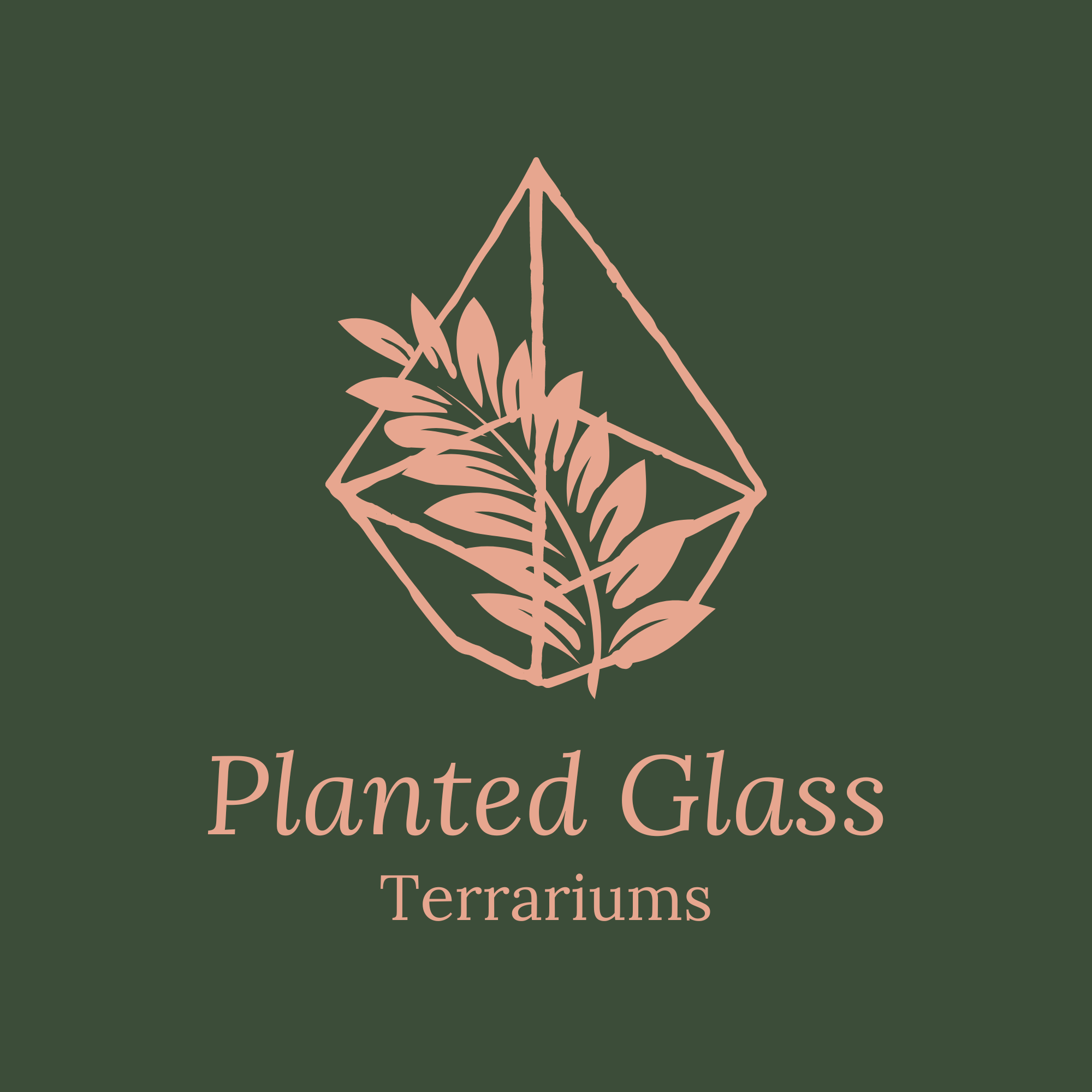Bioactive bugs act as a "cleanup crew" in your terrarium. They feed on decaying plant matter and mold to help keep your terrarium fresh and recycle nutrients in the soil.
The most common terrarium bugs are springtails and isopods. Both bugs are completely harmless to plants and humans. Read on to learn about their amazing benefits in terrariums!
Springtails

My small springtail colony in charcoal in a plastic container.
Springtails are tiny wingless insects that are usually white in color and found in damp environments. They feed on fungus and mold to keep it from maturing and becoming visible in your terrarium.
As if preventing mold wasn't awesome enough, springtails can survive in closed terrariums- no air holes needed! They also regulate their population size based on their environment, so no terrarium is too big or too small for springtails to live in.
You don't need to feed springtails- simply add them to your terrarium and watch them thrive.
Isopods

One of my powder blue isopods eats a crumb of nutritional yeast inside its enclosure.
Isopods are crustaceans (also known as woodlice) that make great pets and members of your bioactive terrarium. The most common species for terrariums are dwarf white isopods and powder blue isopods. Both species are relatively small and manageable in terms of population growth.
Isopods come in many shapes and sizes. If you're looking for unique pets, the clown isopod is a popular choice. Some of these larger varieties of isopod are too large to thrive happily in a small terrarium.

A clown isopod. Photo: iNaturalist Canada.
Isopods need a bit more care than springtails. Luckily, setting up an isopod colony is quite cheap and can be accomplished with a plastic bin with a lid and a few basic materials.
You'll have to create some breathing holes in your terrarium to provide ventilation. Next, provide a couple inches of good quality terrarium soil, followed by a layer of dried leaf litter. Add a few places for your isopods to hide and breed, such as cork bark or an old egg carton.
Keep the soil moist at all times for your isopods! Inside a mostly sealed terrarium, this shouldn't be too much of a hassle. However, the ventilation holes will make the soil dry out faster than usual so spray the soil as needed.

An easy DIY isopod enclosure I made with a plastic bin and mesh ventilation panel.
Hobbyists often recommend creating a moisture gradient in your enclosure so the isopods can choose to hang out on either the dry or wet end of it. If the soil ever dries out completely, your isopods' gills won't be able to breathe and they will die.
Feed your isopods twice a week. You can buy food mixes specifically for isopods or feed them scraps of veggies and other nutritious foods. I like to feed mine nutritional yeast (the yellow powder in the photo above) since it is full of protein and rich in vitamins. The more you feed your isopods, the more they will reproduce.
Finally, provide a source of calcium for your isopods, such as ground eggshells or cuttlebone. Without calcium, your isopods won't be able to maintain their shells and the colony will die off.
Feed your isopods twice a week. You can buy food mixes specifically for isopods or feed them scraps of veggies and other nutritious foods. I like to feed mine nutritional yeast (the yellow powder in the photo above) since it is full of protein and rich in vitamins. The more you feed your isopods, the more they will reproduce.
Finally, provide a source of calcium for your isopods, such as ground eggshells or cuttlebone. Without calcium, your isopods won't be able to maintain their shells and the colony will die off.

Once you've got an isopod colony, you can easily scoop a few out and add them to your terrariums to make them bioactive. Adding at least six isopods to the terrarium will ensure they're able to breed and establish a population.
I made this bioactive terrarium in a large jar. I drilled holes in the lid (not pictured) to provide a bit of ventilation. When I open the lid twice a week for feeding, the isopods also get more airflow. I could probably even leave the lid off, since isopods don't often bother climbing glass and prefer to stay in the jar where they have food and friends.
I made this bioactive terrarium in a large jar. I drilled holes in the lid (not pictured) to provide a bit of ventilation. When I open the lid twice a week for feeding, the isopods also get more airflow. I could probably even leave the lid off, since isopods don't often bother climbing glass and prefer to stay in the jar where they have food and friends.
Benefits of bioactive bugs:
So why should you add springtails and isopods to your terrarium? Terrariums are often called "mini self-sustaining ecosystems." If you want your terrarium to be a true ecosystem, it needs both plant and animal life! Plus, bioactive bugs help to make the "self-sustaining" part true by:
- Preventing mold
- Eating fallen plant matter
- Recycling nutrients in the soil
- Looking awesome!
I hope this blog encourages you to add some creepy crawlies to your next terrarium. You might even become as obsessed with them as I am.

